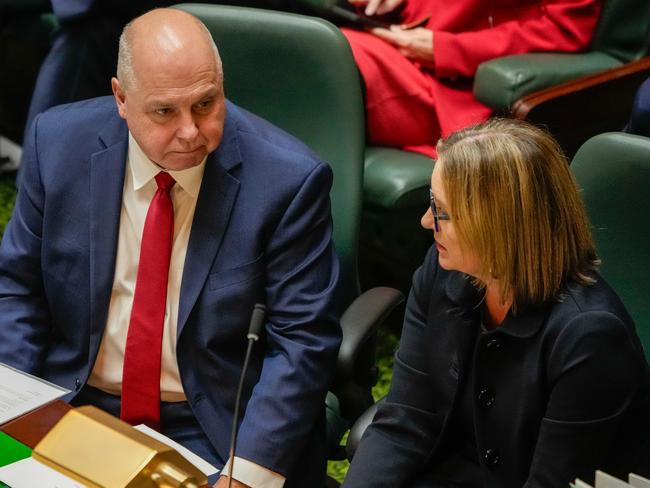Eslake: Treasurer Tim Pallas leaves Victoria economy weaker than he inherited it
Outgoing Treasurer Tim Pallas leaves Victoria with a record debt pile, the second-lowest household disposable income in the nation and the status of being its highest taxing state.
Opinion
Don't miss out on the headlines from Opinion. Followed categories will be added to My News.
Ten years is, these days, a long time for anyone to serve in a senior leadership role, in either the private or public sectors.
From that perspective, it’s not surprising that Tim Pallas has decided to call ‘time’ on his decade as Victoria’s Treasurer – longer, as he noted, than anyone else (other than former Premiers) have occupied that position.
There are some things of which he can be rightly proud.
In particular, employment has grown more strongly in Victoria over the past 10 years than in any other state or territory, and a higher proportion of Victorians have jobs than in any other jurisdiction except mineral-rich WA and the two territories (with their much younger populations).
But, that aside, it is difficult to say that Mr Pallas leaves Victoria in better shape than he found it.
Over the past decade, Victoria’s per capita gross product has gone from being 8.5 per cent below the national average to 11.5 per cent below.
Last year, Victoria’s average household disposable income per head was the second lowest in the country, lower even than Tasmania’s.

That trend isn’t entirely the current Victorian Government’s fault, it’s been exacerbated by the minerals boom from which Victoria derived no benefit.
But it also owes something to the fact that over the past decade Victoria has relied to a much greater extent on population growth as a driver of economic growth, and that much of that growth has been in intrinsically low-productivity industries.
The verdict of history is likely to be harsher when it comes to the area over which Mr Pallas did have control – Victoria’s public finances.
Over the past decade, Victoria’s public sector has incurred cash deficits totalling $109 billion, with a further $60 billion in prospect for the next four years.
As a result, Victoria’s public sector net debt has mushroomed from $36 billion to $155 billion over the past decade, and is projected to rise further to $224 billion over the next four years.
As a percentage of Victoria’s economy that’s almost 10 percentage points higher than in the aftermath of the Cain-Kirner years.
Victoria now has the highest tax burden of any state or territory, instead of having a smaller one than NSW as it did ten years ago.
And that burden is likely to increase further under Mr Pallas’ successor or under a subsequent treasurer.
Saul Eslake is an independent economist who has previously served at chief economist at both ANZ and Bank of America Merrill Lync.
Originally published as Eslake: Treasurer Tim Pallas leaves Victoria economy weaker than he inherited it


